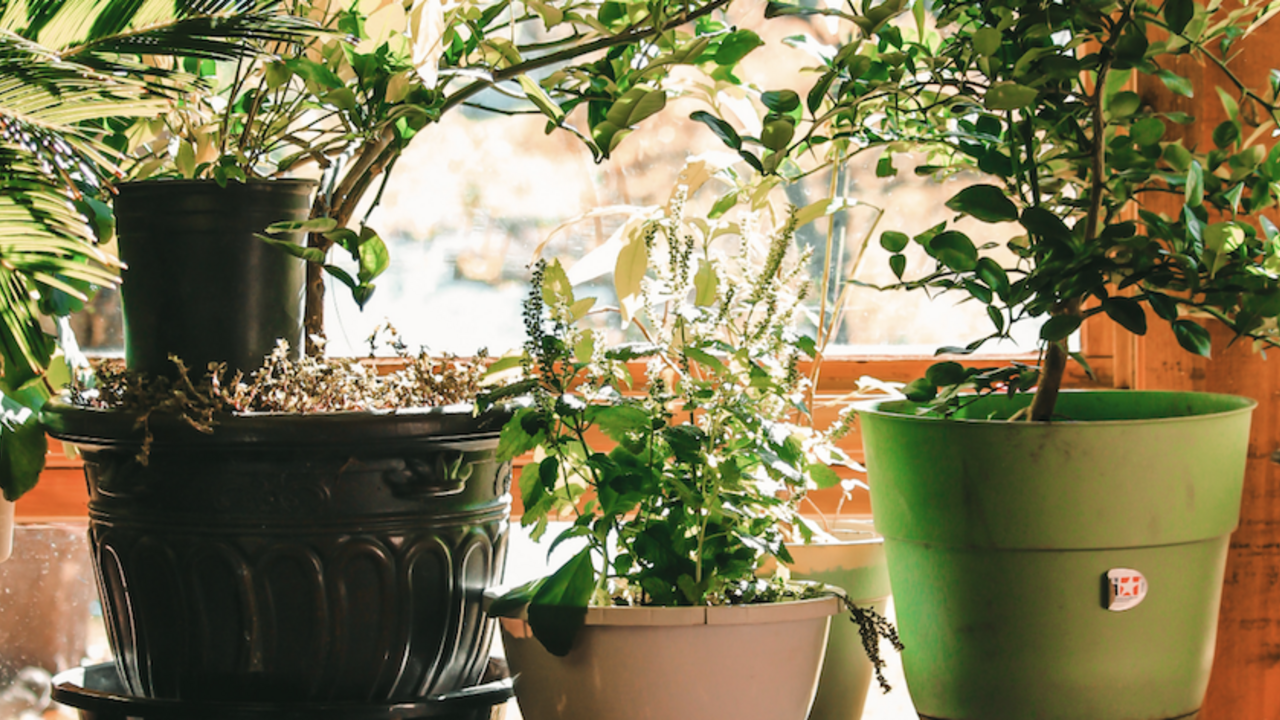Extension for Real Life
Tips for Growing Indoor Plants

Screen Shot 2020-01-10 at 10.40.53 AM.png
Video by Michaela Parker
If you need something green to brighten up your space or get you through the winter months, there is a plant out there for you. But efore you shop for plants, understand the environment of your home or office because different plants have different needs. You must consider six factors when choosing indoor plants if you want to be successful: light, temperature, water, humidity, soil, and fertilization.
Light
Light is how plants make food, so it is the most important aspect to consider when choosing plants. Plants that need a lot of light would prefer a west- or south-facing window. Shade-loving plants will prosper in an east- or north-facing window.
Temperature
Most indoor plants prefer daytime temperatures between 65 degrees and 75 degrees Fahrenheit with nighttime temperatures about 10 degrees cooler. If you’re comfortable, your plants will be fine.
Water
All plants need water but figuring out what is too much or too little can be difficult. Every plant is different. A good indicator is using your finger. If the potting mix feels dry, then water. If it doesn’t feel dry, don’t water.
Humidity
Most indoor environments lack the high humidity that plants have in their native environments. You can increase humidity in many ways, including grouping several plants together or placing pebbles in the bottom of the saucers used to protect furniture. Let some water sit in the saucer, but don’t let it touch the bottom of the pot.
Soil
The potting mix you use for your plants also matters. You can buy a wide range of commercial potting mixes. Ideal potting mixes for indoor plants allow for moisture, drainage, and nutrient-holding capacity.
Fertilization
Fertilizer needs will be plant-specific, but in general, indoor plants don’t need as much fertilizer compared to when they are growing in their natural environments. Water soluble fertilizers applied every couple of months at one-half the recommended rate will suffice for most indoor plants.
Extension Publication 1012, “Care and Selection of Indoor Plants” provides in-depth information on growing indoor plants and a list of plants by light needs.
When you decide on what plants to grow, you of course want to choose healthy plants. The information in Extension Publication 2640, “Selecting Landscape or Indoor Plants: A Pictorial” can help you spot plants with potential problems, including stress, insects, and diseases.
If you are a forgetful plant lover or don't have a lot of time to invest in caring for houseplants, you can still enjoy live plants indoors! Check out our previous blog posts about How to Make a Succulent Dish Garden and How to Choose and Care for Houseplants (Gary Bachman intrduces you to the ZZ plant).
For more gardening tips, information, and entertainment, follow Southern Gardening on Facebook, Twitter and Instagram!
Authors
-
 Extension Associate II
Extension Associate II- Agricultural Communications